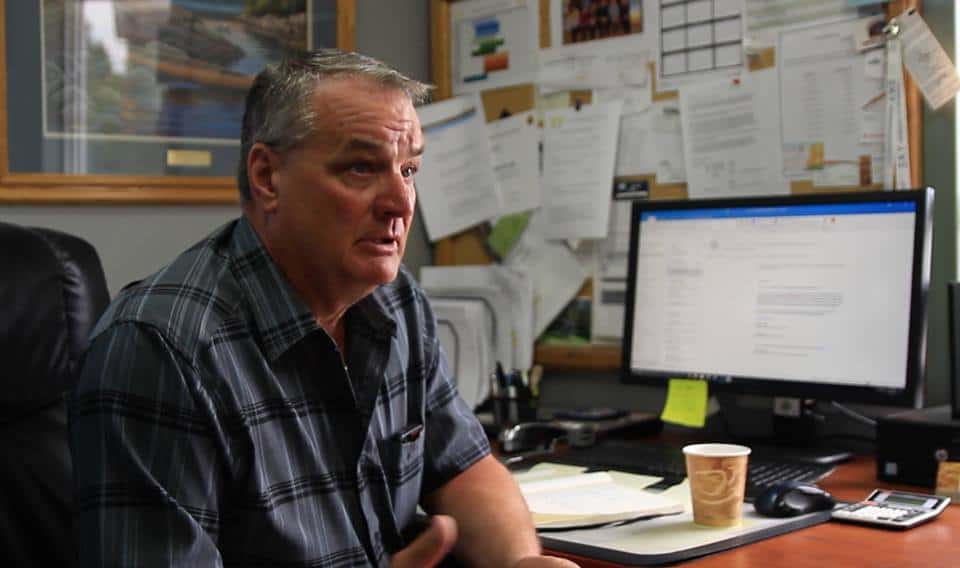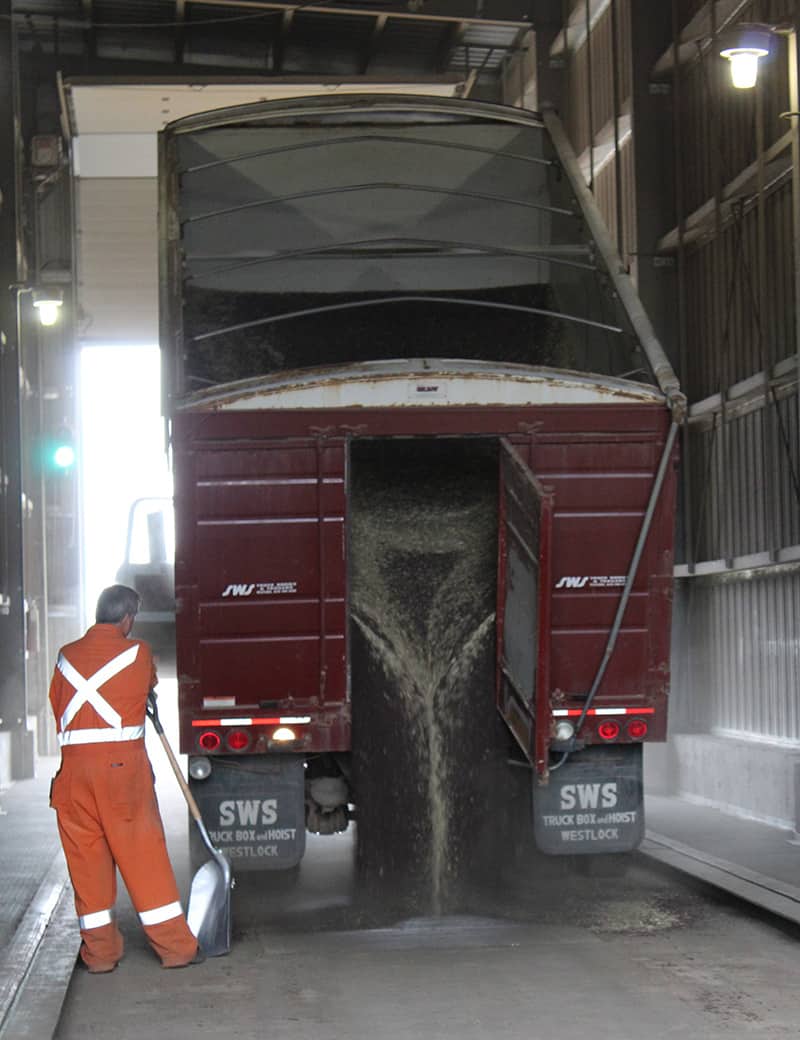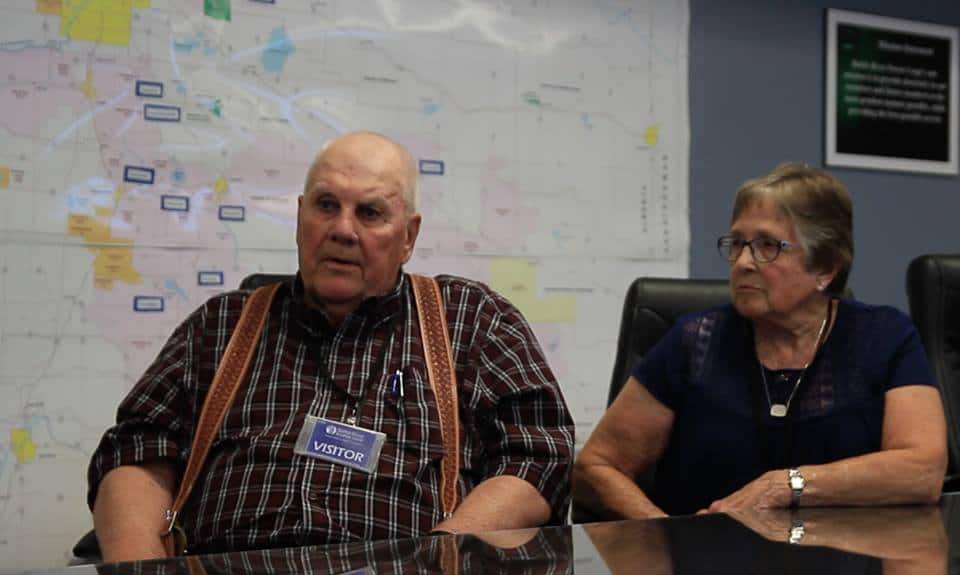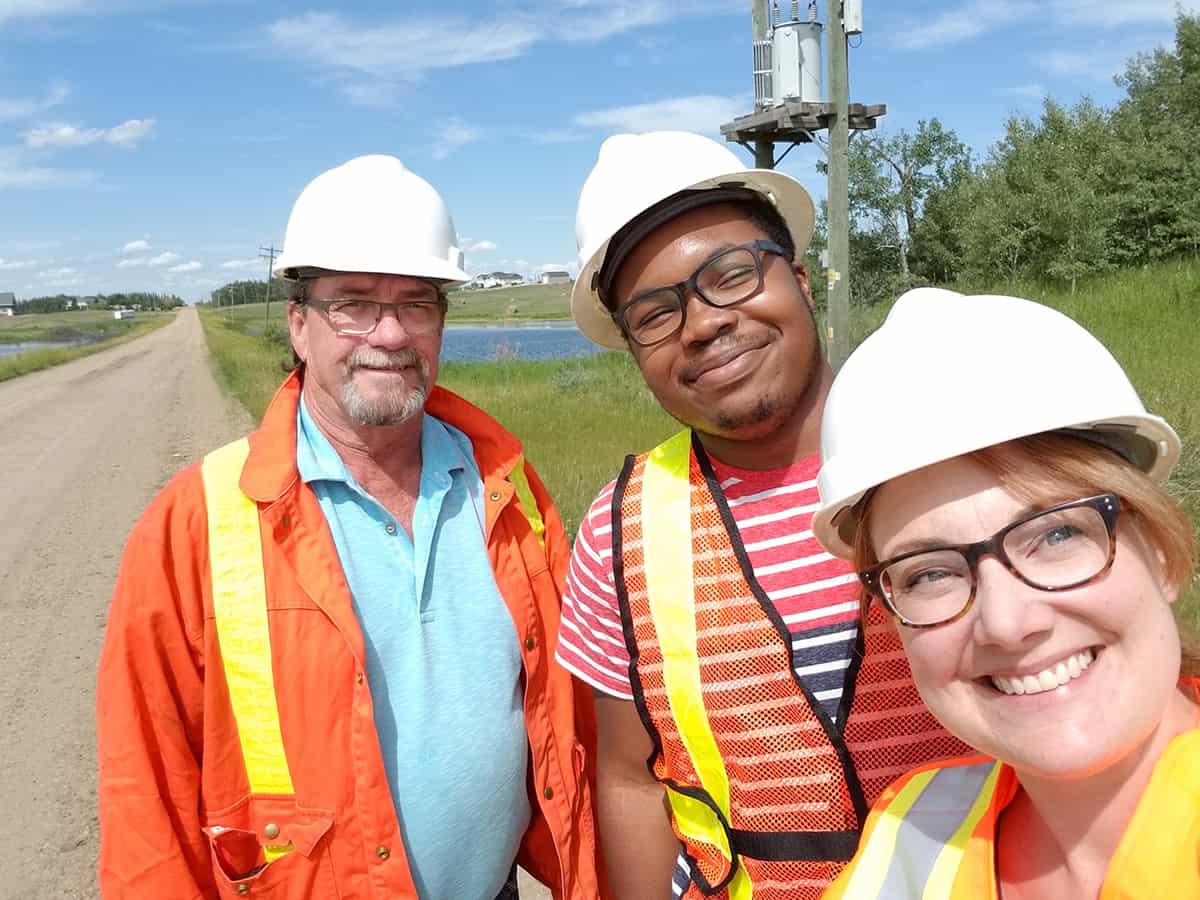In July, we hopped in the car and drove to Alberta to visit two co-operatives helping rural areas grow and thrive.
We first arrived in Westlock, Alberta, a town north of Edmonton built on agriculture, with the railway at its heart. Westlock Terminals – a well-known New Generation co-op built through the innovation, grit and vision of local farmers – is a prominent fixture of the community.
Westlock Terminals

Westlock Terminals is an independently operated grain terminal located on a CN Rail line. The profitable co-operative business is owned by hundreds of shareholders from the surrounding area.
Their website says the terminal is owned by “a blend of farmers and business people” who benefit from “regular returns to shareholders through the dividend yields of the Class “C” shares as well as the incentive yields of the Class “D” shares.”


The CEO, Clifford Bell, was kind enough to tell us all about the co-operative and the ways the business benefits local farmers. When we asked if there were any local farmers we could speak to, he took a quick look around.
But he didn’t need to look far.
Just outside Clifford’s office, Hank was waiting for his truck to be unloaded. Hank was happy to tell us about how much he appreciates having Westlock Terminals as an option for his grain.
Hank farms in the area with his two sons, and is an investor in Westlock Terminals. While we’re chatting, he also mentions he used to sit on the board of his local retail co-op in Neerlandia and urges us to check it out too.
“Co-ops are good, I think they’re great,” he said. “…Co-ops take support, eh? You’ve got to support them and do business with them…I’m a very strong co-op supporter, and all my family is.”
The more we spoke to Hank, the more he wanted to tell us about the Neerlandia co-op: “It’s been a really, really good place to do business. It’s paid good dividends…we’d have spent that money anyway on crop inputs, [but] we wouldn’t have got to share in the profits [if we shopped elsewhere].”
Instrastructure and community
Later, we visited Ralph Legriger — Mayor of Westlock — who not only answered our questions about his community but gave us an amazing tour of some of his favourite parts of town.

The Westlock Rotary Spirit Centre is an impressive facility for a small community, and contains a rink, fieldhouse, track, and gym. Inside is a mural that Ralph wanted to show us, made up of tiles painted by members of the community. This is a truly spirited community rooted in agriculture and working together.
Next, he introduced us to the Canadian Tractor Museum – which is hard to miss, given that it’s marked by an old tractor on a tall pedestal. (Talk about going the extra mile! As we stood chatting among the impressive collection of vintage farm machinery, a train began to rumble by.
Besides providing investors a positive return on their investment, Westlock Terminals helps ensure the viability of local infrastructure, rail being one example.
People complain about having to wait for the train, the mayor noted as we watched the traffic stop to make way for railcars to pass through town — but he said he asks them: “What’s on that train? Everything that makes the town run.”
Neerlandia Co-op
After hearing Hank speak so highly of Neerlandia co-op, we decided to take a quick side trip to check it out. We were not disappointed. Pulling into the parking lot, Sisan remarked: “Forget Neerlandia – this is Co-oplandia.”
The retail co-op is massive: it includes groceries, a home store, liquor store, restaurant, sporting goods, agriculture products, automotive parts and repair, and a cardlock. More impressive? Neerlandia is a town of only about 100 people.
General Manager Albert Mast graciously cut his coffee break short to tell us about the co-op where he started working as a clerk in 1976. He said the co-op started in 1922, and has grown considerably due to the loyalty and support of members that come from miles around.
Battle River Power Co-op

The next day we headed south of Edmonton to a facility just outside of Camrose with an unassuming building that packs a lot of punch. Because of this place and the dedication of the people inside it, rural residents in the area have power in their homes and have for about 70 years.
Co-operatives First has been a follower and admirer of Battle River Power Co-operative for some time now. When brainstorming places in Alberta that would suit The Backroad Diaries, they were a natural choice to include on the tour.
The utility provider has been in business for about 7 decades and was founded (and continues to be run) by independent and entrepreneurial rural Albertans. Their mission is “to provide the best and most cost effective electric power service to [their] 8,500 member-owners.” And they do this with both class and grit.
Their social media is chock full of useful and timely information related to service and benefits, which include a really smart way of supporting local businesses and the regional economy. (Check it out for yourself: It’s awesome!) And they’re line team goes above and beyond to ensure everyone has power.
Rural hospitality
When we contacted Battle River Power’s Communications Manager, Betty, she, in a way that is truly unique to rural areas, also went above and beyond to make sure we felt welcome and were well taken care of. (Thanks, Betty!)
Betty arranged for us to speak to the Chair of the Board and the General Manager of the co-op, as well as a long-time lineman, and the vegetation manager (that ever-important person who ensures trees don’t interfere with power lines). She brought in some loyal members for us to talk to over lunch (which she also provided, bless her).

Not everything went according to plan though. Betty had arranged for us to get some footage of linemen doing some repairs out in the field, but apologized profusely when we had to cancel that part of the schedule due to bad weather. (Weather-wise, rural Alberta can be an unpredictable place.)
The area had experienced some pretty serious thunderstorms over the last few nights, and the linemen were out all night getting people’s power back up and running. (Because it’s more than a 9 to 5 gig – especially when its your friends, family and neighbours who are impacted.) The result of the long night was that the linemen wouldn’t be doing any scheduled jobs that day.

Still, she arranged for us to have a tour of the area with Glenn, Map Analyst and long-time line-man, who drove us around to see some of the houses they provide service to. Glenn also offered up an amazing amount of detail about volts, power lines, and transformers. (You’re in good hands, folks. That guy really knows his stuff!)
The local advantage

Colleen Musselman, Battle River Power’s GM, said being a co-op is about quality of service – especially when outages hit. Unlike other utility providers that no longer provide service between 11:00 p.m. and 8:00 a.m., Batter River Power linemen go out immediately and work until everyone’s power is up and running.
In a city, Colleen said, linemen might turn on power for thousands of people with one repair: because the co-op serves rural areas exclusively, they may be working to make sure just one house gets its power back. This reality is what kept large corporate utility companies out the area back in the 40s when REAs were starting up in Alberta. Today, it’s what makes Battle River Power Co-op different from its competitors.
The rural advantage
When an ice storm took down 40 miles of power lines in 2007, linemen worked for five days straight, at times in water up to their waists. Some members were without power for five days or more, but could see how hard linemen were working to restore the line; they pitched in where they could, providing food to the workers, or helping plow access roads.
In that process, Colleen said, they learned “the benefit of what people can do together to really care about people and make a difference.”
A central part of a way of life
At Co-operatives First, we’ve sometimes been told co-ops and Alberta aren’t compatible. We (very politely) disagree. What Westlock Terminals and Battle River Power Co-op show is that the model is very much in line with the entrepreneurial and independent spirit of Albertans.
Like the folks at Westlock and Battle River Co-ops, many Albertans see the co-op model for what it is, which is what helps them use it so effectively. The business model is a great tool for DIY projects, and DIY is very much Albertan. In fact, the model is an excellent option for entrepreneurial and independent people looking to take matters into their own hands, rather than wait for suits out east or government to do it for them.

Alberta’s REAs, like Battle River Power, can also create an ecosystem in which people get a service they need, good paying jobs are created, and the local economy benefits — especially with a “buy local” policy, such as Battle River Power’s Member Benefits program. Plus, successful co-operative businesses tend to re-invest heavily in the local community, in some cases providing scholarships, sponsoring sports teams or paying for playground equipment.
For many rural Albertans, co-ops are a central part of their way of life. We think co-ops and Albertans are a highly compatible pairing.
A special “thank you” to Cliff, Hank, Ralph, Colleen, Bob, Margaret, Glenn, Betty and everyone else we met along the way for the amazing Alberta hospitality!




